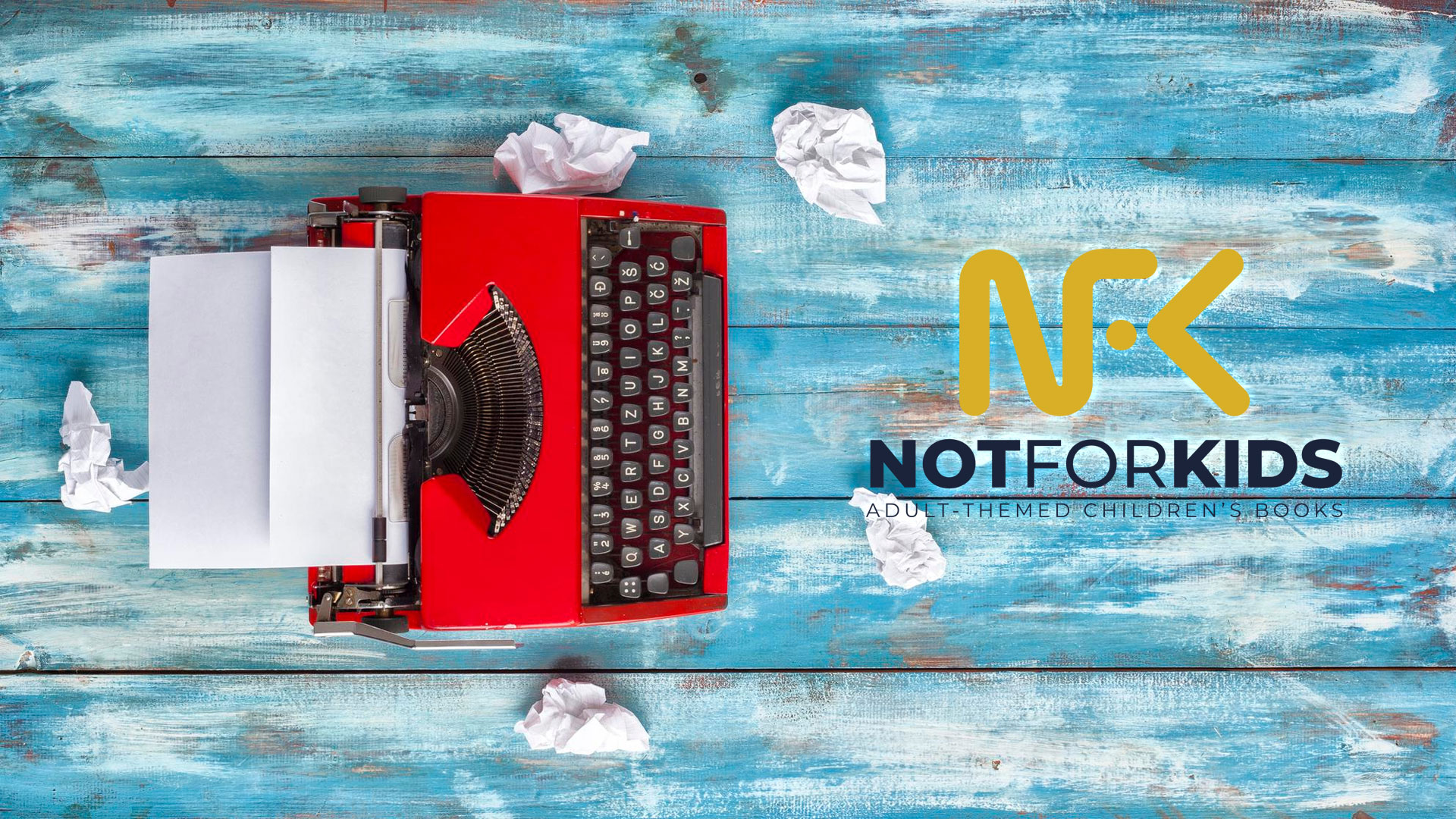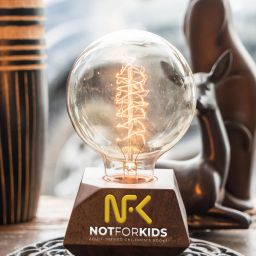Writing a book—whether it’s a children’s story, memoir, or satire—starts with an idea. But how do you take that idea and organize it into something cohesive? This week, we’re diving into four powerful tools for structuring your ideas: Mind Maps, Concept Maps, Knowledge Graphs, and Story Arcs.
To keep things fun and relatable, I decided on using a random topic for the topic of the next Not for Kids (NFK) book. We’ll use the invention of the light bulb as our example topic throughout.
A Mind Map is a creative brainstorming tool that helps organize ideas visually. It starts with a central concept and branches outward into subtopics, forming a web of interconnected thoughts. This method is particularly useful for capturing a flood of ideas quickly and seeing how they relate to one another. For writers, a Mind Map is a fantastic way to explore plotlines, characters, themes, or any other elements of a story before committing to a formal structure. The flexibility of Mind Maps allows for free association, making them perfect for writers who thrive on creativity and spontaneity.
Example: The Light Bulb
- Start with “Light Bulb” in the center.
- Add branches for:
- Key Figures: Thomas Edison, Joseph Swan, Humphry Davy.
- Challenges: Filament materials, cost, durability.
- Breakthroughs: Bamboo filament, vacuum-sealed bulbs.
- Impact: Modern lighting, industries transformed.
Why Use It?
- Helps spark ideas quickly (no pun intended 😊).
- Shows connections between concepts.
- Ideal for visual thinkers who want to see the big picture before diving into details.
A Concept Map takes the free-flowing nature of a Mind Map and adds more structure to show clear relationships between ideas. Instead of simply brainstorming, Concept Maps focus on connecting ideas with labeled links that describe their relationship. For example, a Concept Map about the invention of the light bulb might connect “Electricity” to “Filament Testing” with a label like “enables” or “requires.” This writing style is ideal for nonfiction or technical topics where understanding cause and effect, sequences, or dependencies is critical. It’s a practical tool for organizing complex information into a logical and easily digestible format.
- Example: Linking “Electricity” to “Filament Testing” with arrows that show cause and effect.
- Purpose: To clarify how ideas relate to one another, ideal for organizing complex topics.
Example: The Light Bulb
- Starting Point: “Invention of the Light Bulb.”
- Key Connections:
- Electricity → Enabled experiments with filaments.
- Filament Trials → Led to cost-efficient bamboo filaments.
- Patent Battles → Resulted in mergers and collaborations.
Why Use It?
- Focuses on causes and effects.
- Shows logical relationships, making it ideal for nonfiction topics.
- Great for building complex outlines or technical books.
A Knowledge Graph is a sophisticated tool for mapping interconnected information, often incorporating data or historical facts. Unlike a Concept Map, which focuses on relationships, a Knowledge Graph often includes timelines, events, or data points to create a structured overview. Writers might use Knowledge Graphs to track historical developments, like key milestones in the invention of the light bulb, or to map the connections between characters and events in a complex narrative. This style is especially helpful for research-based books or projects that rely on detailed, fact-driven content. It ensures that all relevant pieces of information are accounted for and displayed in a way that highlights their interconnectivity.
Example: The Light Bulb
- Graph Nodes:
- 1802: Humphry Davy creates the first electric arc lamp.
- 1841: Frederick de Moleyns patents an incandescent lamp.
- 1879: Thomas Edison perfects a bamboo filament bulb.
- 1880: Joseph Swan patents a similar design in England.
- Connections:
- Edison → Collaboration → Swan → “Ediswan Company.”
- Filament Testing → Material Costs → Mass Production.
Why Use It?
- Ideal for nonfiction books, timelines, and biographies.
- Helps organize historical data into storylines.
- Great for creating detailed reference books.
A Story Arc is the backbone of narrative writing, outlining the emotional journey a character undergoes throughout a story. It maps out the rises and falls of tension, conflict, and resolution, giving the story its structure and pacing. There are several common types of Story Arcs, such as “Rags to Riches” (a rise to success) or “Man in a Hole” (a fall followed by recovery). Each arc shapes how readers experience the story’s progression and emotional impact. Story Arcs are fundamental in creating engaging and relatable narratives, whether for fiction, memoirs, or narrative nonfiction, ensuring the story resonates with its audience. There are six common arcs, each serving different tones and themes and I’ll highlight them below.
Example: The Light Bulb (as a story arc)
- The “Rags to Riches” Arc
A protagonist rises from struggle to success.
- Example: Edison struggles to find the right filament, faces failures, but ultimately changes the world with his invention.
- The “Riches to Rags” Arc
A fall from grace, highlighting loss and failure.
- Example: Edison’s early success is overshadowed by legal battles and competitors outpacing him.
- The “Man in a Hole” Arc
A character falls into trouble but climbs back out.
- Example: Edison’s failed experiments leave him financially strained, but he overcomes setbacks to achieve success.
- The “Icarus” Arc
A rise to success followed by a dramatic fall.
- Example: Edison’s dominance in the lighting industry fades as competitors improve technology and mass production.
- The “Cinderella” Arc
A slow rise to happiness, often with setbacks.
- Example: Edison experiments tirelessly, facing ridicule, but triumphs when the light bulb finally works.
- The “Oedipus” Arc
A character achieves success but suffers tragic consequences.
- Example: Edison’s ambition leads to success but strains his relationships and personal life.
Why Use It?
- Great for fiction or narrative nonfiction.
- Provides emotional structure to keep readers engaged.
- Makes complex topics more relatable and personal.
The structure you choose depends on your audience and the type of book you’re creating:
- Mind Maps for brainstorming and general planning.
- Concept Maps for building connections and flow.
- Knowledge Graphs for data-driven and historical narratives.
- Story Arcs for emotional, narrative-driven storytelling.
For example, if you’re writing a children’s book about Edison’s journey, a “Rags to Riches” arc could inspire young readers to pursue their dreams. If you’re crafting a business book, a Knowledge Graph could lay out the evolution of ideas and patents that led to success.
Writing is rarely a one-size-fits-all process. Whether you’re working on a cookbook, a children’s story, or a satirical Not For Kids book, tools like Mind Maps, Concept Maps, Knowledge Graphs, and Story Arcs can make the process easier—and more fun! Next week I’ll dive into using one of these processes for the invention of the light bulb.
If you remember from the poll results from last week, I’ll be testing royalty-free artwork alongside these methods to create a streamlined process you can follow.
What about you? Which style do you use—or want to try—for your book? Drop a comment and let’s share ideas!










